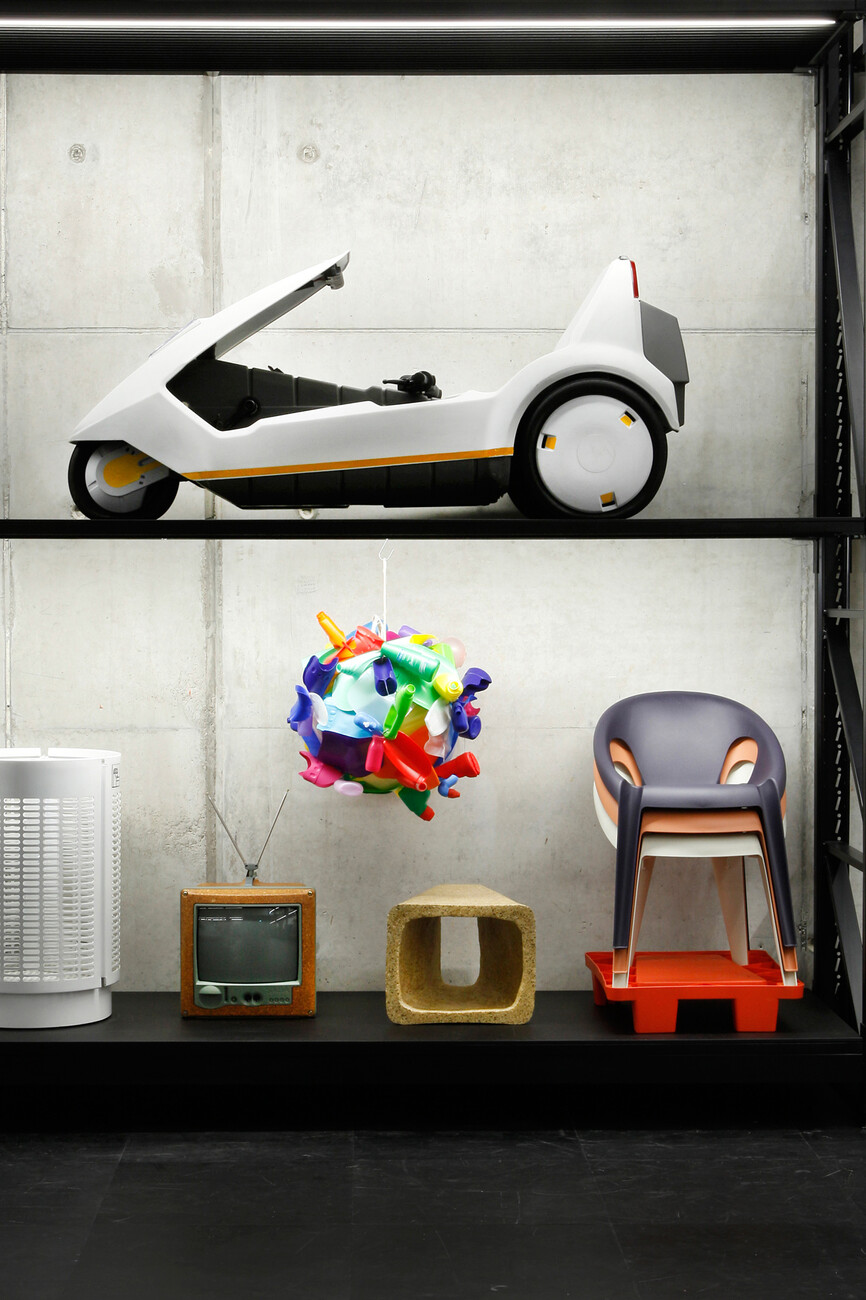A new exchange
Alexander Russ: Ms Nollert, what is the X-D-E-P-O-T?
Angelika Nollert: The X-D-E-P-O-T is a 600-square-meter space that forms part of Die Neue Sammlung, the design museum attached to the Pinakothek der Moderne. The storeroom in question is located in the second basement level and was designated for use by the Die Neue Sammlung from the outset. However, for various reasons, most of which were economic, it did not work out at the time. When I subsequently became the director of Die Neue Sammlung back in 2014, we revisited this space that was previously just used as a storeroom, made some appeals for donations, and raised funds so that we could turn it into a kind of showcase depot area. Over the course of the process, however, the concept then changed. The term “showcase depot” actually means that a storeroom is being opened for viewing, but that’s not the case here. This was the context in which we started developing the notion of the X-D-E-P-O-T, based on a curatorial concept. The X stands for notions such as exchange, experiment or examine, which make it clear that the visitor is not only a passive observer of the objects, but rather should also be drawn into the exhibition.
What exactly will it look like?
Angelika Nollert: We are setting up tables as well as duplicates of chairs from our collection that the visitors can use – for example to work or read. We also want to position so-called “hands-on objects” on the tables. These kinds of objects and their usage can be experienced directly there. Many young people don’t even know what a typewriter or a record player is. On one tour, for example, a school student pointed to Dieter Rams’ “Schneewittchensarg”, or “Snow White’s Coffin”, and asked me if it was a hotplate for making crepes.Furthermore, we also want to set up collaborations with designers, start-ups and school institutions. Students can take inspiration, for example, from the objects of the X-D-E-P-O-T and develop their own projects from these.
How have the Kuehn Malvezzi architects implemented the curatorial concept in architectural terms?
Angelika Nollert: The first thing was to ready the space by toughening up its structural properties and also improving fire prevention and barrier-free access. For the spatial concept, Kuehn Malvezzi then worked with what was available, for example using the existing industrial shelves on which objects from our collection have previously been stored. The space is about seven meters high. Since it was necessary to incorporate an elevator for barrier-free access, Kuehn Malvezzi added an elevated walkway on the first basement level. From there, it is now possible to get down to the second basement level via the elevator or a staircase. The new walkway structure has been kept white, while the shelves are black. This produces a very graphic distinction between old and new. From the walkway, you get a good view into the space and the exhibition. Since part of the shelves is integrated directly into the walkway, some of the exhibits can be seen from very close up.
What is the principle behind the arrangement of the objects on the shelves?
Angelika Nollert: The shelves function like a system of coordinates underpinned by a kind of matrix. The items are sorted in a somewhat associative manner that is based on thematic areas, which means the objects are not arranged chronologically, geographically or hierarchically. Instead, we have developed themes such as “shape”, “material”, “color” or “areas of activity” and “current content”. This makes it possible to exhibit objects that we have previously not exhibited, or which were displayed only rarely. Example themes include gaming, sustainability, carbon, secondary architecture or even graphic design – a section of the collection that includes packaging design as well as 15,000 posters, for example. This way, we are able to draw attention to the diversity of our collection.
In the press folder, you describe this as a “creation of architectures that permit varied semantics in relation to space, time and narration”. Do your spatial and organizational approaches pick up on a new development in curation?
Angelika Nollert: Yes, I would say so. Of course, it all relates to the question of what actually forms part of the canon. The classics, like our original furniture from the Bauhaus, are certainly an important part of the collection’s presentation and these should also be displayed. Nevertheless, as a curator you must frequently consider how you can present these objects in an appropriate context. Two questions that are posed to us time and again in relation to this are, on the one hand, how we actually know what good design is, and on the other, how we are able to depict the world in its full diversity. Due to developments in cultural history in recent decades, our opportunity lies in thinking internationally and thus evaluating things differently. Of course, this also has a bearing on how collections are compiled in future. Digitization has made it easier.
How has digitization changed your curatorial work?
Angelika Nollert: Digital concepts are not in competition with analog experiences, but rather supplement them. Both have their places, so it’s not merely about digitizing the analog world, but also developing concepts that make sense within a digital framework. Even before COVID-19, for example, we developed an app that recreates the sounds of our objects in a playful way. These include the ringtone of a telephone from the early 20th century, or the bleep of an internet modem at the beginning of the 21st century. We at Die Neue Sammlung are therefore interested not only in the shape but also the sound of a design object. What kind of soundscape did office appliances create in the 1960s and how does that relate to today? When you consider objects as a mirror of a specific cultural understanding, then this aspect provides another piece of the puzzle that is the bigger picture.















